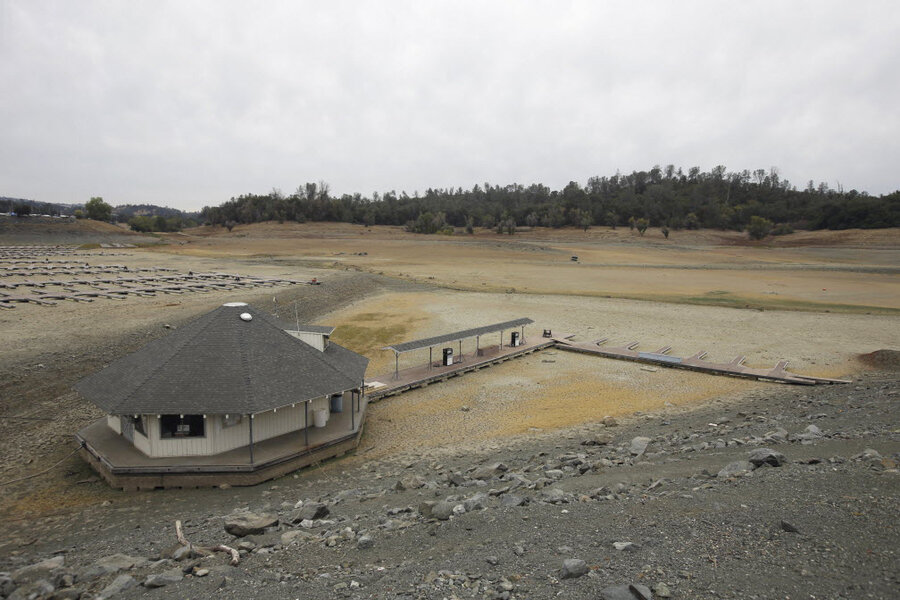Can lessons from Australia's 'Big Dry' save California?
Loading...
More than 9,000 miles of ocean lie between San Diego and Australia's National Centre of Excellence in Desalination. But the California city of 1.3 million, entering the state's fifth year of drought, will soon have something in common with Western Australia: a desalination plant, scheduled to open December 14.
Centre Director Neil Palmer wrote a letter of congratulations to the San Diego Tribune this week, applauding the city's decision to build a 50 million gallon-per-day plant to provide fresh water at a time when the groundwater supply is dwindling.
During its own "Big Dry" from 1997 to 2009, when rain levels hit record lows in Australia, the country invested roughly $11 billion in desalination. Although not all of the plants are being used today, the Perth plant still provides almost half of the city's water, just 30 miles from Mr. Palmer's Centre.
It's one of many ways water experts say California can learn from water innovations the Land Down Under adopted during its drought, from using 'greywater' from dish water to left over water from laundry machines to sustain lawns to the cost-saving trick of treating and recycling wastewater.
"But honestly I think the biggest story is a behavioral story – somehow the utilities managed to mobilize people around this idea that if they didn’t change their water use behavior the city would run out of water," University of California-Irvine environmental engineer Stanley Grant told Smithsonian.
Californians seem to be having mixed success adapting to the "new era" of water use, as Gov. Jerry Brown called it at a news conference last spring. The Associated Press has reported that the state is slightly exceeding new conservation goals, after Governor Brown set a target of reducing water use by 25 percent, compared with 2013 levels.
"I think people have gotten the message," Felicia Marcus, chairwoman of the California's Water Resources Control Board told the AP. "Californians are continuing to understand that they need to save water."
But some resistance to water limits has sprung up, particularly among homeowners with large properties. "We pay significant property taxes based on where we live," one Southern Californian told The Washington Post's Rob Kuznia, summarizing, "No, we’re not all equal when it comes to water."
"A big starting point to make all these things work is public engagement," UC Irvine Professor David Feldman told The Monitor in October. For water conservation to work, "You have to engage, educate, and bring along" the public.
The average Melbourne resident uses just 25 percent of the water used by a Los Angeleno, as the Monitor reported. Somehow, the message that drier conditions are a new reality, not a one-time fluke, seems to have sunk in. In 1989, the Australian government reframed its thinking about drought, calling it a policy issue rather than a natural disaster.
Not all of Australia's approaches can be transported across the Pacific. Its open water market wins praise from environmental experts, but could lack political traction in the US, and desalination plants have their own critics, who say they're too expensive and could damage marine life.
But the shift from crisis-mode to long-term planning could serve California, and eventually the rest of the United States, very well as countries prepare for shifting climates ahead: decreasing snowmelt, higher seas, and hotter temperatures.
"We want to return every bit of water that we can to the ground and then eventually be able to use it later on," Australian water expert Anas Ghadouani told Smithsonian.
This report contains material from The Associated Press.








